The anti-inflammatory and antibacterial properties of pink salt make it a perfect choice for skin irritations like eczema or psoriasis. Since salt can be absorbed through the skin, taking a Himalayan salt bath can help infuse our skin with minerals and remove waste and toxins. It can also improve circulation, which helps the blood to bring oxygen and nutrients to all areas of our skin, leaving a nourished and healthy glow.
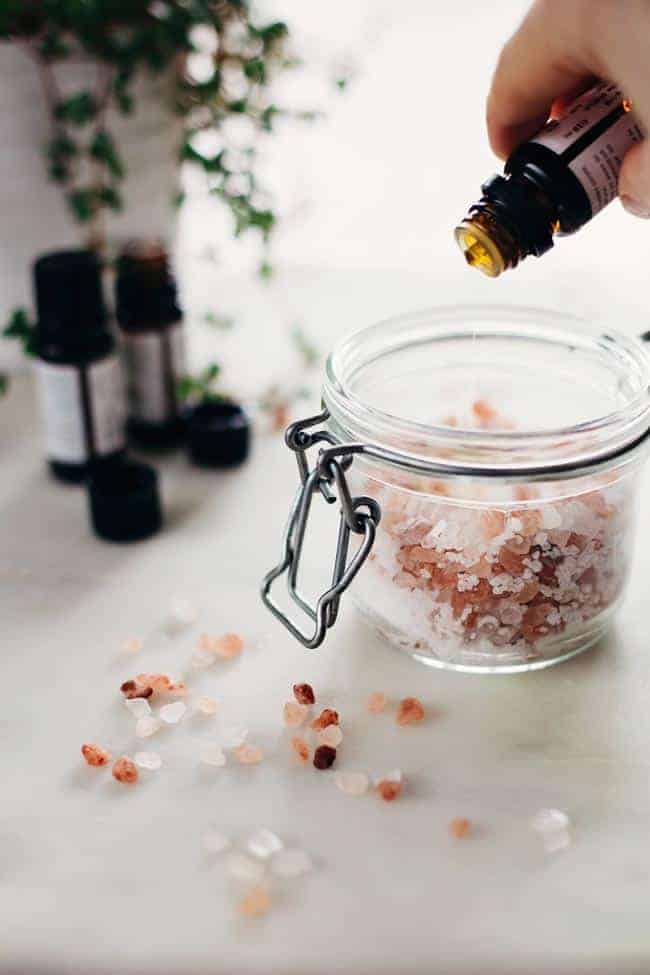
Jump to:
Himalayan Salt Bath Benefits

Detox baths go beyond a traditional relaxation soak.
They can soothe the symptoms of colds and infections, aid the immune system, and boost the body’s detoxification pathways.
As the heat from the bath dilates the blood vessels, your pores open, and detox ingredients like Epsom salt can be absorbed into the skin more readily [source] to draw out toxins and deliver minerals like magnesium.
Volunteers bathing in a high-saltwater source have seen improvements in the skin barrier and overall skin hydration, as well as reduced redness and irritation [source].
Its anti-inflammatory effects have also been seen in patients with knee arthritis [source], fibromyalgia [source], and other rheumatologic conditions [source].
So, whether you’re attempting to soothe sore muscles, detox, or improve your overall health and beauty, the next time you draw a bath, consider a combination of Epsom salt, herbs, and essential oils for a health-promoting pink Himalayan salt bath recipe.
1. Soothing Herbal Himalayan Salt Soak
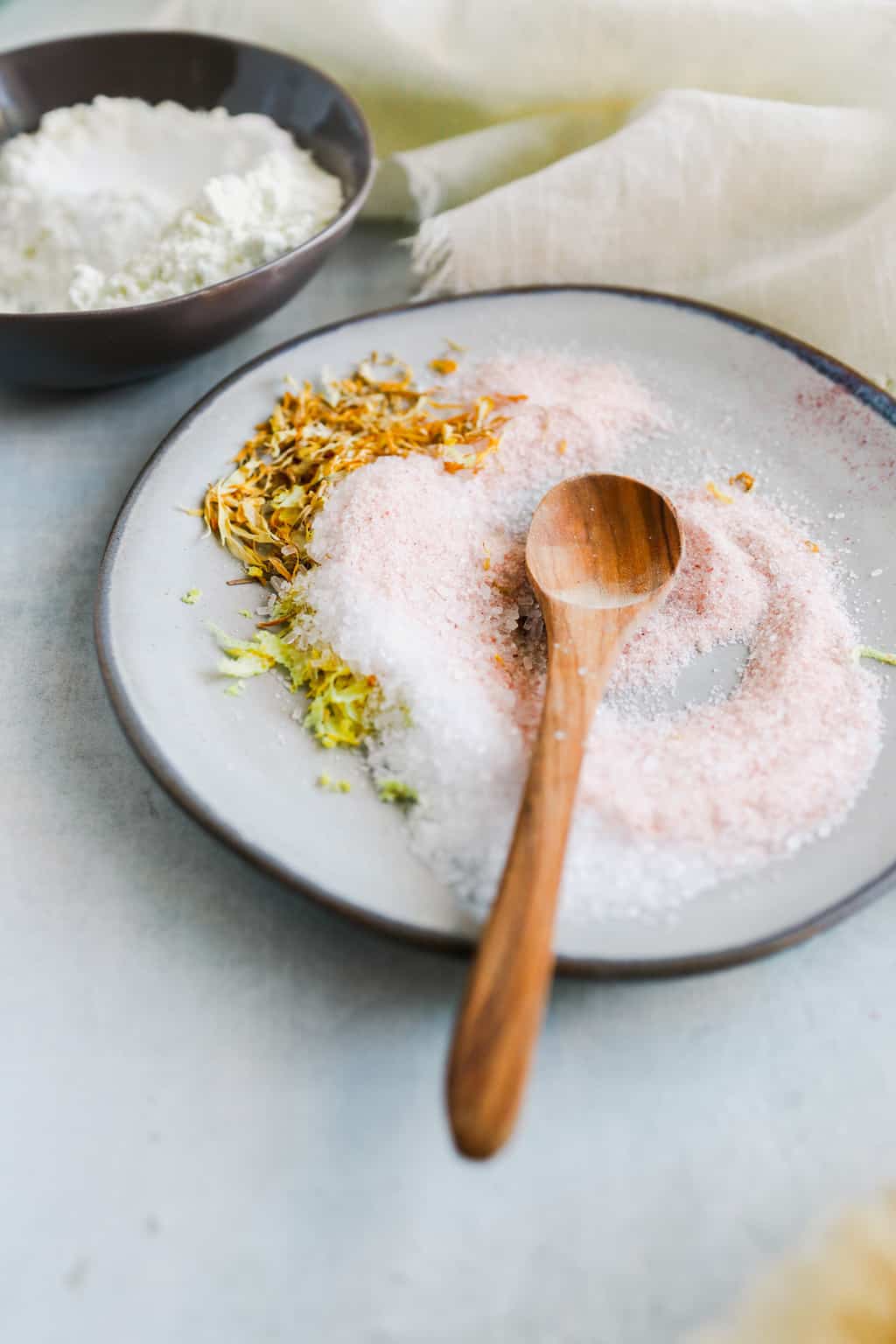
This Himalayan bath salt recipe soothes muscles, replenishes minerals, and gives you a healthy dose of aromatherapy.
- 1 cup Himalayan pink salt
- 5 drops each tea tree and rosemary essential oil
- 1 tablespoon grated lemon zest
- 1 tablespoon dried calendula
Combine the ingredients in a small bowl. Pour the entire mixture under hot running water, and use your hands to help dissolve the salt before climbing in.
2. Immune-Boosting Pink + Epsom Salt Soak

Epsom salt soaks are awesome because this not-really-a-salt is rich in magnesium to help support multiple body processes [source]. While Himalayan salt supplies vitamins and minerals, the lemon zest [source], calendula [source], and essential oils lend their natural benefits to the skin.
- 1-½ cups Epsom salt
- ½ cup Himalayan pink salt
- 10–15 drops essential oil (try a combination of lemongrass, lavender, eucalyptus, and bergamot)
3. Himalayan Salt Detox Bath
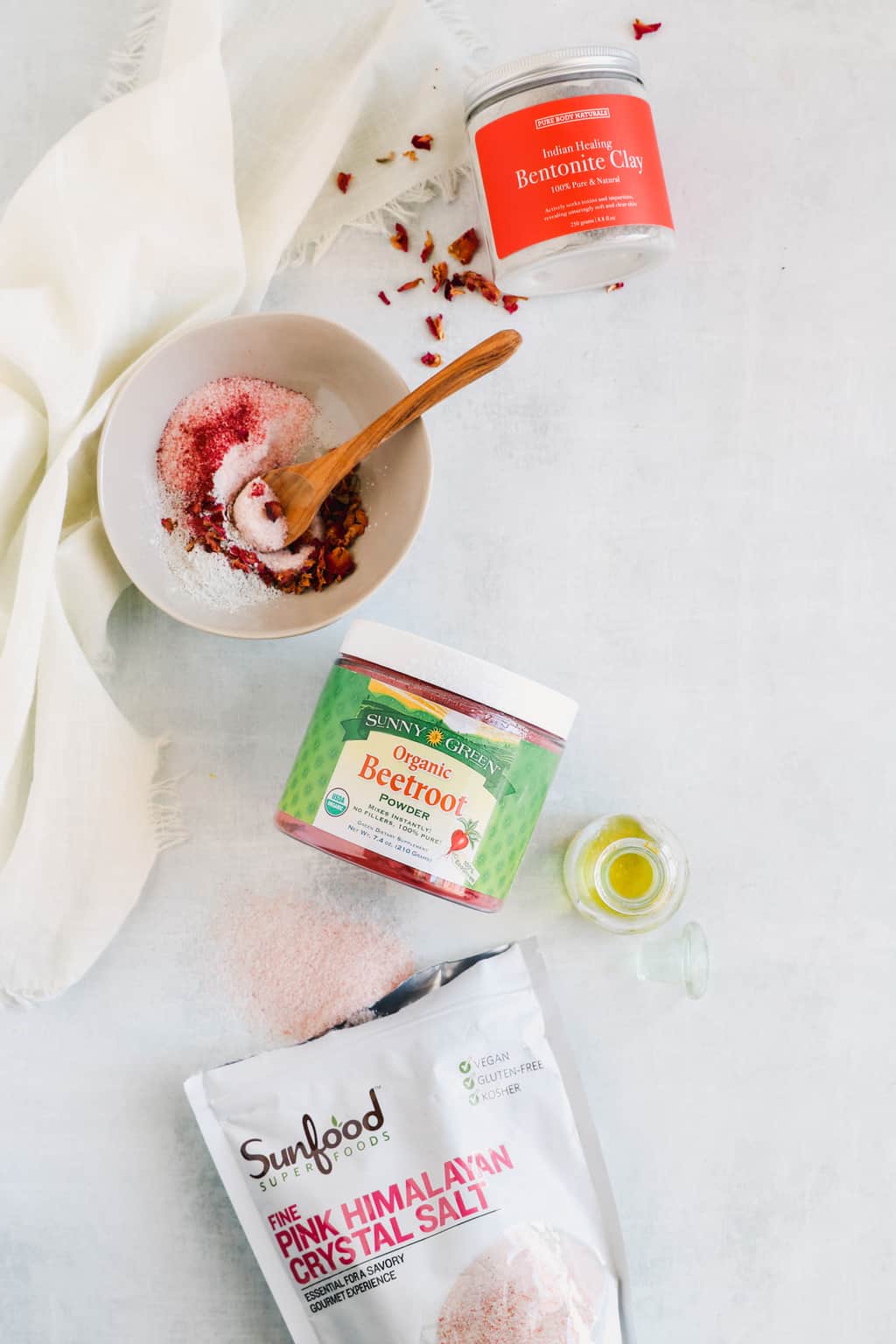
Bentonite clay is said to help remove impurities from the body. When used as a bath ingredient, it encourages detoxification by drawing impurities out through the skin [source].
Not only are they antibacterial, but beet root powder [source], rose petals [source], and geranium [source] supply powerful antioxidant compounds to the skin that counteract oxidative damage.
- ⅓ cup bentonite clay
- ¼ cup Himalayan salt
- 2 teaspoons beet root powder
- 1 tablespoon dried rose petals
- 10 drops geranium essential oil
To make your bath soak, simply combine the ingredients in a small bowl. Pour the entire mixture under hot running water, and use your hands to help dissolve the salt before climbing in.
Soak for 20–40 minutes before toweling off (or feel free to take a shower and rinse off when you’re done).
How Much Himalayan Salt to Add?
A general guideline is to use approximately ½ to 1 cup of Himalayan salt per standard-sized bathtub. If you want a stronger salt bath, you can add up to 2 cups, but it's best to start with a smaller amount and adjust based on your preference.
For a salt foot soak, a tablespoon or two of Himalayan salt should suffice.
Stir the salt into the warm bathwater until it dissolves to ensure an even distribution.
Tips for Taking a Himalayan Salt Bath
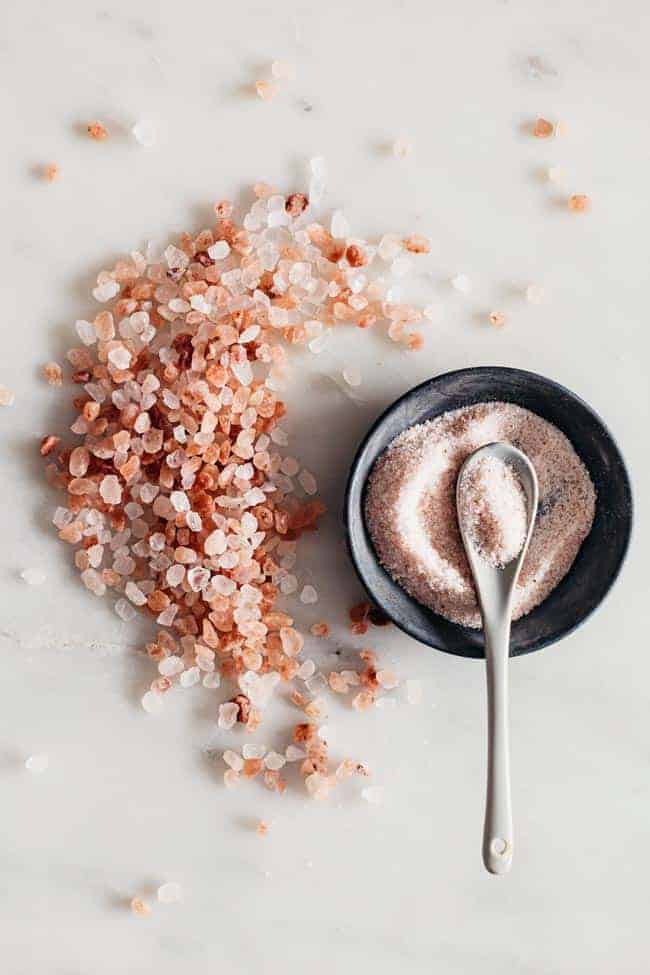
Look for finely ground pink salt so it dissolves faster in the warm water (otherwise you'll be sitting on salt chunks, which doesn't feel awesome). If you have coarse grain pink salt, pulse it in the food processor a few times to break it down.
Hot water makes you sweat. And the more you sweat, it may be the better the detox [source]. So, make the water as hot as you can tolerate without burning yourself or harming your skin.
If you don’t have a bathroom water filter, add 1 cup of baking soda to help remove chemicals from the bath water and aid in mineral absorption.
You’ll want to soak between 20 and 40 minutes, so give yourself plenty of time to relax and enjoy your peaceful bath soak.
Take a glass of water and keep it next to the tub. Since you’ll be sweating, it’s a good idea to hydrate both during and after your bath.
Once you’re done, make sure to stand up slowly while holding on to something that will steady you in case you feel light-headed. So take it easy, and don’t move too quickly.
A light, chemical-free moisturizer can help replenish moisture after your bath. But you’ll want to avoid anything with chemicals, artificial fragrances, or anything that might irritate skin.
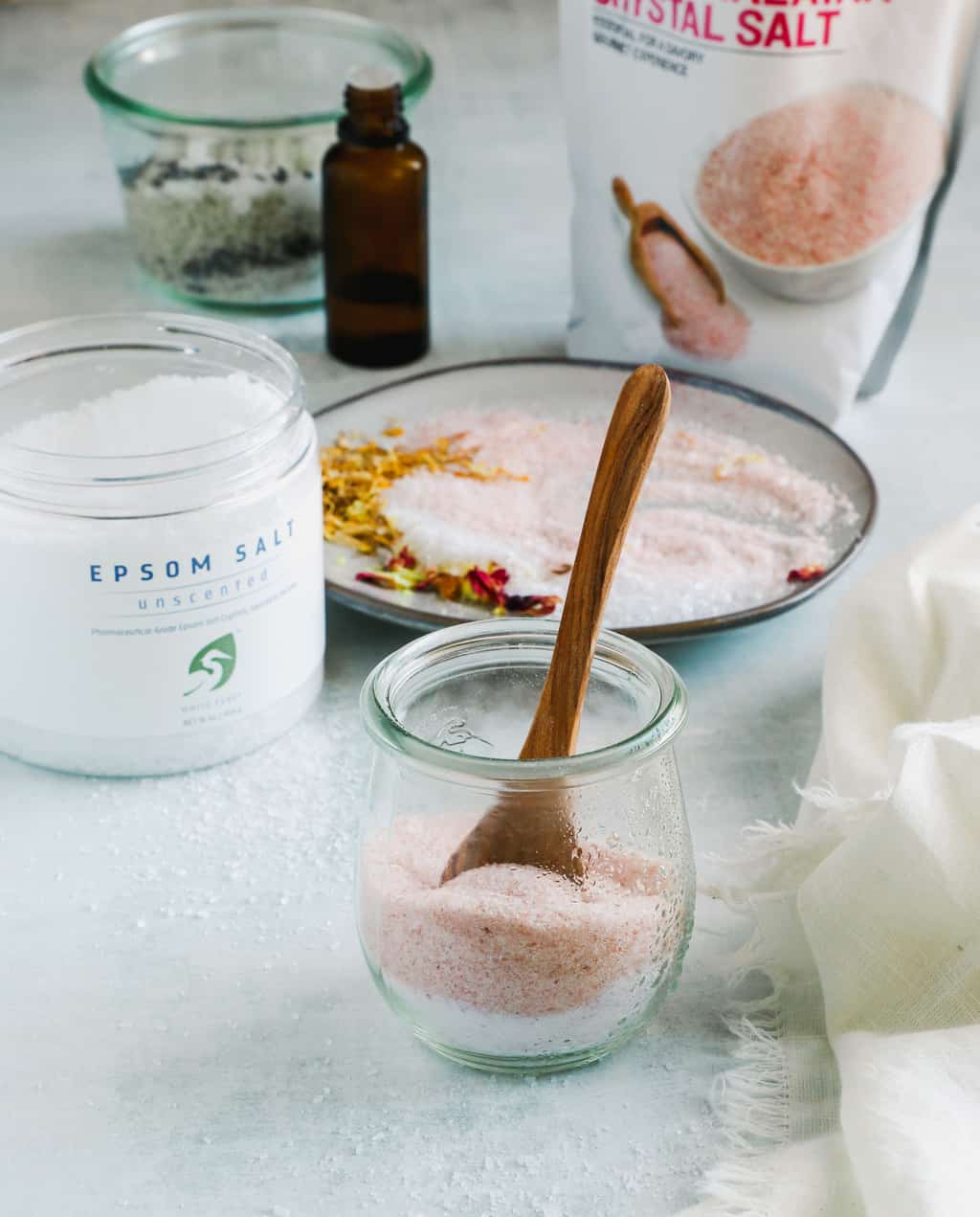
Pink Salt Bath FAQ
No, you don’t need to. But if you don’t like the feeling of post-bath skin, then you might want to take a cool shower afterward.
Generally speaking, ½–1 cup of soak should be enough to reap its detoxifying benefits. But you can’t really add too much, so I recommend using the entire recipe.
You’ll want to use your homemade bath salts within a week or so (unless you add food-based ingredients, in which case they’ll last only 1–2 days). While traditional bath salts don’t really go bad, too much moisture will eventually cause them to harden into a solid block of salt, which makes them unusable.
3 Himalayan Salt Bath Recipes
Equipment
- Small bowl
Materials
Soothing Salt Soak
- 1-½ cups Epsom salt
- ½ cup pink Himalayan salt
- 10–15 drops essential oil (I recommend a combination of lemongrass for sore muscles, lavender for relaxation, eucalyptus for sinus trouble, or bergamot for focus.)
Immune-Boosting Salt Soak
- 1 cup pink Himalayan salt
- 5 drops each tea tree and rosemary essential oils
- 1 tablespoon grated lemon zest
- 1 tablespoon dried calendula
Pink Clay Salt Soak
- ⅓ cup bentonite clay
- ¼ cup Himalayan salt
- 2 teaspoons beet root powder
- 1 tablespoon dried rose petals
- 10 drops geranium essential oil
Instructions
- Combine the ingredients in a small bowl and stir well.
- Pour the whole bowl under hot running water, and use your hands to help dissolve the salt before climbing in.Soak for 20–40 minutes.
References
Proksch E, et al. Bathing in a magnesium-rich Dead Sea salt solution improves skin barrier function, enhances skin hydration, and reduces inflammation in atopic dry skin. Int J Dermatol. 2005.
Sukenik S, et al. Balneotherapy at the Dead Sea area for knee osteoarthritis. Isr Med Assoc J. 1999.
Sukenik S, et al. Balneotherapy at the Dead Sea area for patients with psoriatic arthritis and concomitant fibromyalgia. Isr Med Assoc J. 2001.
Falagas ME, et al. The therapeutic effect of balneotherapy: evaluation of the evidence from randomised controlled trials. Int J Clin Pract. 2009.
Chandrasekaran NC, et al. Permeation of topically applied magnesium ions through human skin is facilitated by hair follicles. Magnes Res. 2016.
Fiorentini D, et al. Magnesium: biochemistry, nutrition, detection, and social impact of diseases linked to its deficiency. Nutrients. 2021.
Kim DB, et al. Antioxidant and anti-ageing activities of citrus-based juice mixture. Food Chem. 2016.
Arora D, et al. A review on phytochemistry and ethnopharmacological aspects of genus Calendula. Pharmacogn Rev. 2013.
Moosavi M. Bentonite clay as a natural remedy: a brief review. Iran J Public Health. 2017.
Miguel MG. Betalains in some species of the Amaranthaceae family: a review. Antioxidants (Basel). 2018.
Mahboubi M. Rosa damascena as holy ancient herb with novel applications. J Tradit Complement Med. 2016.
Narnoliya LK, et al. The phytochemical composition, biological effects and biotechnological approaches to the production of high-value essential oil from geranium. Essential Oil Research. 2019.
Sears ME, et al. Arsenic, cadmium, lead, and mercury in sweat: a systematic review. J Environ Public Health. 2012.
This article was medically reviewed by Dr. Gina Jansheski, a licensed, board-certified physician with more than 20 years of practice experience. Learn more about Hello Glow’s medical reviewers here. As always, this is not personal medical advice, and we recommend that you talk with your doctor.
30
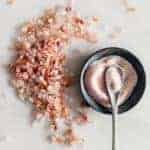
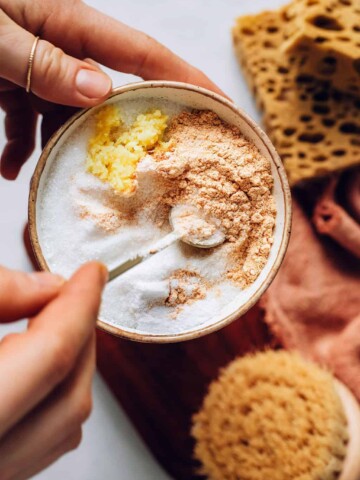

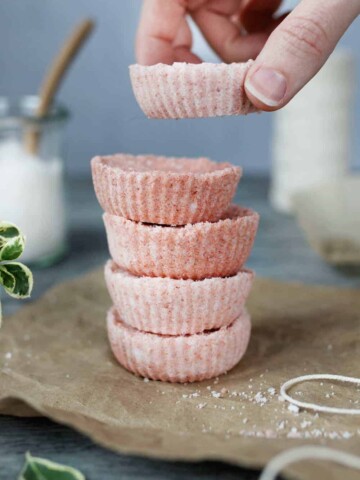

Leave a Comment